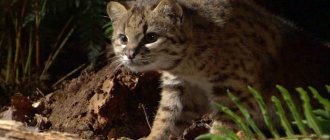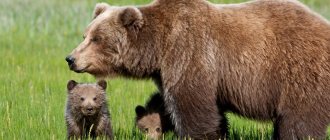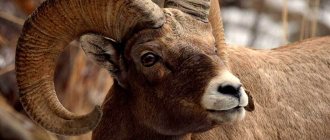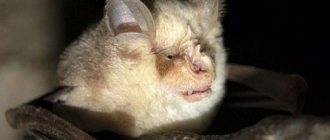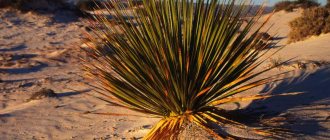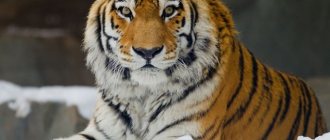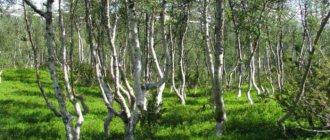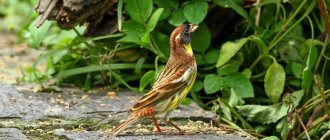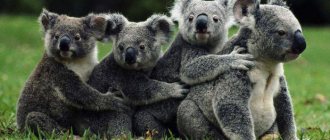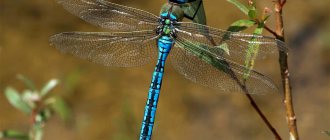Forests occupy large areas of our planet. These areas are very important from a natural, environmental and industrial point of view. Any forest is a natural habitat for many biological species (plants and animals), acts as a raw material for many types of industry and is the main recreational potential.
Forests influence the condition of the soil and, to some extent, shape climatic conditions; their contribution to the purification of the atmosphere as a whole is very difficult to overestimate.
Mixed forest is part of the planet’s forests, occupying 3.6 billion hectares of land or 27%. This forest is filled with coniferous and deciduous trees. The territory of mixed forest begins after the taiga zone before the steppes. It has a mild climate, which is suitable for animal habitat and plant growth.
Species and types of mixed forest
Mixed forest is a forest where deciduous and evergreen coniferous trees grow interspersed. Kinds:
- In the coniferous-deciduous forest, a stable natural formation, evergreen species and deciduous trees with expanded leaves are “friends”. Oak forests with broad grass are developed here.
- Coniferous-small-leaved forests are light-colored, while deciduous trees have narrow leaves. The grass cover is overgrown. These forests dominate in area over broad-leaved oak forests, as they grow faster. Further north the number of coniferous trees increases.
- The Australian southeast is covered with mixed subtropical monsoon forest.
Fauna of deciduous forests
Due to the presence of not only trees, but also shrubs, grasses, mosses and a layer of falling leaves in temperate forests, the layering is excellently expressed. Therefore, they create conditions for a variety of life forms.
A huge number of invertebrates live in the high litter and top layers of soil: stag beetles, longhorn beetles, earthworms, caterpillars, insect larvae, ticks, spiders. Birds nest in the crowns and pillars of trees, squirrels, lynxes, forest cats and all kinds of insects live. The most densely populated are the ground levels. Here, the animals of mixed and deciduous forests are represented by ungulates, large and medium-sized predators, various birds, amphibians and reptiles.
For North America, such inhabitants are familiar as wild turkeys, gray and black squirrels, bears, Virginia deer, Canadian beavers, blackbirds, thorns, red-eyed roe deer, marmots and Virginia possums. Animals of the deciduous forests of Russia and Europe - deer, deer, brown bear, fox, ermine, badger, raccoon, elk, hare and wolves. Pumas, pudus, and Chilean cats live in South America. In Asia and the Far East, typical animals of deciduous forests are wolverine, deer, raccoon dogs, red deer, Manchurian hares, goral and harz. Amur tigers from the Red Book and Far Eastern leopards also live here.
Where are mixed forests located?
Mixed forest covers less territory than coniferous wilds. In the south, mixed forest is more often replaced by broad-leaved forest, where there are no spruce and pine trees. Many areas of the eastern part of Europe are occupied by mixed forest, which begin from the Polish and Belarusian border, the strip of forest stretches beyond the Urals.
mixed forest of the Urals photo
Mixed forest is also widespread in the south of Scandinavia. The northern border of Russian forests runs along the line of St. Petersburg. Mixed forests occupy the southern territories of Canada and the northern and eastern regions of the United States. Coniferous-deciduous forests occupy areas in Canada and Portugal, and the northern regions of the United States.
Also the distribution areas of this type of forest are: Europe, Central and East Asia, Great Britain and Northern Japan.
Soils
The soil in a mixed forest is saturated with humus formed by fallen leaves and pine needles under the influence of moderate humidity. The main component of soddy-podzolic soil, characteristic of the northern forests of New Zealand and South America, is humus. Along with brown forest soil, this species predominates in the forest thickets of the Eurasian mountains. The mixed forests of the southern regions are accustomed to gray forest soils.
Characteristics of mixed forest
A forest is considered mixed if it contains 5-7% of other tree types. These forests are resistant to the adverse effects of climate with warm summers and not too frosty winters, which last 3.5-4 months.
mixed forest in autumn photo
The proximity of deep rivers provides a lot of moisture, and sedimentary rocks: clay and sand help the formation of lakes and swamps. Coniferous-small-leaved forests found among the taiga are not durable. Here they play the role of a restoration stage for destroyed coniferous forest or broad-leaved oak forest.
Skunk
The skunk is not found in our deciduous forests, but it is typical of North America. It lives in burrows, which it digs with its own hands using long claws and powerful paws. The skunk climbs trees well, but does not live there. He has good hearing and a good sense of smell, but his vision, like that of a predator, is weak. He sees an animal no higher than 3-4 meters.
It’s difficult to confuse him with someone, because his appearance and habits are quite memorable. The skunk is black in color with two wide white stripes running from the head to the tip of the tail. With his flowers he does not even try to disguise himself in the forest, but, on the contrary, warns against people approaching him. If the enemy gets too close, the animal sprinkles him with a fragrant secretion that smells like rotten eggs.
Features of mixed forest
Differences of mixed forest:
- Distinguishable tree layers. Above the rest is a tier of pines, larches and spruces. Then there are deciduous trees. The undergrowth is occupied by bushes. A litter of lichens, grass and moss.
- Natural forest processes that maintain the balance and diversity of tree species are interconnected.
- The vegetation is better adapted to cold climates than in deciduous forests.
- The mosaic structure of the foliage and layering provide plenty of sunlight and developed grass cover.
- There is a clear change of seasons.
Human
The zone of mixed and deciduous forests has long been developed by people. Here, minerals are mined, green areas are cut down, and the powerful energy reserves of rivers . A huge part of the territory is devoted to agriculture and cattle breeding . In addition, a significant amount of space has been given over to cities, roads, pipelines, reservoirs, etc. All this has led to the fact that the zone of broad-leaved and mixed forests has changed greatly. Today there are practically no places left untouched by man , and those that have survived are under protection.
Share link
Climate
Mixed forests prefer temperate and subtropical climates. Temperatures: in some places minus 30 in winter, average temperature 6-16 degrees below zero, and plus 30-35 degrees in the summer months, average 15-20 degrees. Precipitation is 750-1400 mm, evaporation is low.
mixed forest in winter photo
In the coniferous-deciduous forest, the humidity is moderate and the temperature is close to a slightly continental climate. European and North American forests are cool in spring. Temperatures above 15 degrees rise by the end of May in the southern regions. The temperature decrease begins in mid-August or early September. By the end of November the ground is covered with snow. In Australia, wet mixed forest occurs in the subtropical zone, where it is warm and humid.
What birds are forest birds?
On the territory of our country, nomadic forest birds include:
- tits;
- nuthatches;
- crossbills;
- siskins;
- Shchurov;
- bullfinches;
- waxwings, etc.
Interesting materials:
What does a snail see? Why is Headen Shoulders shampoo harmful? Why is baking in foil harmful? Why are store-bought cakes harmful? How to remove furniture staples? How is the participial phrase expressed in a sentence? The higher the sun is above the horizon, the more the surface heats up? How to remove stains from white linen? How to remove paint from fabric? What caused Famusov’s monologue That’s what all of you are?
Birds
The upper tiers of the forest are the kingdom of birds, among which there is a predominance of insectivorous and granivorous birds, distinguished by their sonorous singing. These are nightingales, orioles, song thrush, starling. Finches are distinguished by their bright plumage. The mountain ash thrush likes rowan berries. The siskin prefers forests with birches and alders.
As in other types of forests, magpies, cuckoos and woodpeckers, and nuthatches live here. Instead of taiga wood grouse, the forest niche is occupied by black grouse. Small birds and rodents are afraid of birds of prey: goshawk, kestrel, harrier, owl and buzzard.
LiveInternetLiveInternet
Eurasia
Approximately on the Leningrad-Kazan line, the taiga turns into a mixed forest. To the south and west of this line, coniferous species are gradually replaced by broad-leaved trees. The animal world is also gradually changing.
In the mixed forest we also find many taiga animals: white hare, elk, squirrel, flying squirrel, wood grouse. But animals typical of deciduous forests also live there: red deer, wild boar, roe deer. In the broad-leaved forest there are significantly more different tree species than in the taiga. There are many bushes and clearings are common here. The fauna in these forests is also richer and more diverse than in the taiga. The predominant birds here are insectivores and granivores. Squirrels in these forests feed not on the seeds of coniferous trees, but on hazel nuts, seeds of linden, maple and other deciduous trees, and acorns. Acorns are the favorite food of wild boars. Bears and other animals and birds eat acorns.
Green lizard
The most typical animals for deciduous forests are : forest cat, brown bear, pine marten, black polecat, mink, weasel, squirrel, several species of dormouse. The most abundant birds here are the green woodpecker, spotted woodpeckers (great, middle and small), wood pigeon, oriole, chaffinch, wood lark, tits - great and blue tits, black and song thrushes, western nightingale, robin. From the south, some steppe animals penetrate into the broad-leaved forests: brown hare, hamster, gray partridge.
Among the reptiles in the deciduous forests, there are green and viviparous lizards, spindle, copperhead and common viper, and among amphibians - grass and sharp-faced frogs, tree frogs.
Wolves.
Even in the last century, huge wild bulls - bison - lived in large numbers in the broad-leaved forests of Europe. They inhabited the forest areas of Central Europe and northwestern Russia. Predatory hunting and wars led to their almost complete extermination. A huge amount of work has been done in our country to restore the number of bison. Purebred bison are kept and successfully breed in the Belovezhskaya Pushcha and Prioksko-Terrasny nature reserves. Now the number of bison in the USSR has increased significantly. Bison feed on grasses, buds, leaves and bark of deciduous trees.
River beavers were also found in the area of deciduous forests. The fur of these animals is extremely highly valued, which is why they have long been the object of intensive fishing and at the beginning of the 20th century. were almost completely destroyed. Now in our country these animals are protected by law. Work is underway to resettle them. Beavers live on quiet forest rivers, the banks of which are densely overgrown with deciduous trees. They feed on tree shoots and bark, and from branches they build their homes - huts, from trunks and branches - dams, which block the river bed, creating artificial creeks. The size of the huts varies. They serve beavers for many years, are annually repaired, completed, and sometimes reach enormous sizes. So, in the Voronezh Nature Reserve there is a hut, the height of which is 2.5 m, and the diameter of the base is 12 m. But usually they are smaller: 1-1.5 m high and 3 m in diameter.
Noble deer.
The most amazing structures of beavers are dams. The animals arrange them in case of a strong drop in the water level in the river. The finished dam is so strong that a person can freely cross it from one bank to the other. The length of the dams varies - 15-20, 50 m, and in North America there is a beaver dam reaching 652 m in length, 4.3 m in height with a base width of 7 m and a crest of 1.5 m.
There are a lot of moles in deciduous forests. They spend most of their time underground, in deep burrows and passages. Moles feed mainly on insects and their larvae, worms and other invertebrate animals. Moles do not hibernate in winter, since even at this time of year there is enough food for them underground. Hedgehogs, which are numerous in deciduous forests, also feed mainly on invertebrates.
In the basins of the Volga, Don, and Ural, an extremely peculiar animal lives - the muskrat. It spends most of its time in water, in coastal burrows. Of the sense organs, the muskrat has the best developed sense of touch, smell and hearing. He touches with the help of special hairs on his muzzle and front paws. Its muzzle is elongated in the form of a movable proboscis, at the end of which there are nostrils. Sometimes, before swimming to the surface, the muskrat sticks out its proboscis and, turning it in all directions, sniffs the air. In case of danger, he himself can remain under water for a long time, breathing with the help of his proboscis exposed above the surface. The muskrat feeds on worms, leeches, mollusks, water insects and their larvae. The muskrat is a very valuable animal: it has high-quality fur. The number of this animal is currently negligible, and hunting for it is severely limited. In the deciduous forest zone there are many bats, which are almost absent in the taiga. They are nocturnal and crepuscular and feed almost exclusively on insects.
Bison
The characteristic inhabitants of the deciduous forest are dormouse (hazel, garden, forest and dormouse), which fall into deep hibernation in the winter. They feed on fruits, acorns, nuts, berries and insects. Their favorite habitats are dense undergrowth and bushes. Dormouses live in tree hollows or build nests on branches.
The wild boar is a strong animal with fast movements, easily carrying its heavy but tightly built body on relatively short, strong legs. Wild boars always live in small herds consisting of males, females and piglets. Only old cleavers lead a lonely life. With its small eyes, the boar sees rather poorly, so smell and hearing play a very important role in its life. It is no coincidence that the first movement of a boar that suspects danger is to raise its nose upward and forcefully draw in air, while simultaneously pricking its ears. Wild boars lead a predominantly nocturnal life, and during the day they rest in the most remote and inaccessible places. However, where they are not disturbed, they often feed during the day. Like domestic pigs, wild boars are omnivores.
Boar.
Sparse forest, tall grass glades and bushes are the favorite habitats of red deer and roe deer. The pine marten is one of the most valuable fur-bearing animals. She makes her nests at high altitudes in hollows. More often than other animals, the squirrel suffers from this predator. The nocturnal lifestyle of the marten gives it enormous advantages in hunting squirrels, since the squirrel is a diurnal animal and sleeps soundly in its nest at night. It is not difficult for a marten to capture her while she is sleeping. Having reached the squirrel's nest, the marten looks for the entrance hole, which the squirrel closes from the inside with a plug made of some soft material, and, bursting into the nest, grabs the sleeping mistress. The marten also eats plant foods: fruits, berries. She loves honey very much. Having found a nest of wild bees, the marten sometimes lives near it for a long time; Often several martens gather at the nest.
Hoopoe.
Black polecats live in sparse woodlands. He makes his nests under stumps, in hollows, among brushwood, in old holes of foxes, badgers and other animals. Of the reptiles, the deciduous forests are home to cottonmouths, and of the amphibians - numerous newts.
Marten.
Animals of deciduous forests have different importance in human economic activities. Some are harmful, others are beneficial. For example, mouse-like rodents cause enormous damage to crops and forests. The wolf has long been considered a dangerous pest of livestock farming and hunting, but calls for the complete destruction of the wolf are not justified. The wolf, by destroying mainly weakened and sick animals, contributes to the improvement of the populations of wild animals on which it feeds (see article “How plants and animals live in nature”). In areas where. The number of wolves is insignificant, there is practically no harm from it. All ungulates and fur-bearing animals have commercial value and are also objects of sport hunting. Numerous species of insectivorous birds, especially tits, flycatchers, warblers, warblers, orioles, woodpeckers, and cuckoos, destroy a huge number of harmful insects and their larvae, clearing forests, gardens, fields and orchards of them. Some birds of prey are extremely useful - kestrels, buzzards, owls, harriers, which destroy a lot of rodent pests.
Roe.
In our time, the fauna of deciduous forests has undergone great changes under the influence of human activity. Many animals have changed the limits of their distribution in this zone, expanding them or, conversely, reducing them. The number of some animals has decreased, some of them have almost disappeared, others, on the contrary, have become more numerous. Our country is currently working to restore and protect natural resources. This also applies to the zone of deciduous forests, in particular its fauna
Source: https://www.zoodrug.ru/ Source: https://www.zoodrug.ru/topic1861.html
Trees
Broad-leaved tree species are represented by maples, ashes, elms and hazels. In addition, this includes oak and linden, poplar and elm, wild apple and pear. Small-leaved tree species include birch, alder and willow trees, and rowan bushes. Evergreen species include spruce and pine. The same goes for larch, which sheds its needles for the winter. Deciduous tree representatives also shed their leaves in the fall, adapting to the winter cold.
Amur goral
Goral is a representative of the mountain forests of East Asia and the Far East. It lives on the Korean Peninsula, in the Primorsky and Khabarovsk Territories of Russia, as well as in the northeastern regions of China.
This animal of broad-leaved forests resembles a goat in appearance, covered with thick, warm fur. It has a gray-brown color with a dark longitudinal stripe on the back and a white spot on the neck. His head is decorated with two small horns curved back. Gorals live in small groups or alone. They are not fighters, and in case of danger they begin to hiss and try to climb higher into the mountains.
Problems
Problems for the forest are created by man and nature:
- Fires that occur when a tree is struck by lightning, during abnormal heat, or when people handle fire carelessly.
- Acid rain with toxic dust and gases due to unsatisfactory operation of wastewater treatment plants of industrial enterprises.
- Grazing by an excessive number of domestic animals, which eat young trees and trample down the grass.
- Direct destruction by humans - timber harvesting in excess of the norm.
- Plastic waste, bottles and other garbage.
- Poaching, which reduces and destroys the number of rare representatives of flora and fauna.
Pine marten
The yellowfin, or marten, lives mainly in Europe. It has long and thick dark brown fur. There is a light yellow spot on the animal’s chest, by which it can be easily distinguished from other martens. The animal climbs trees well, jumps 4 meters in length, and easily maintains balance. Stone martens live in abandoned hollows or nests of large birds, spending most of their lives in trees.
